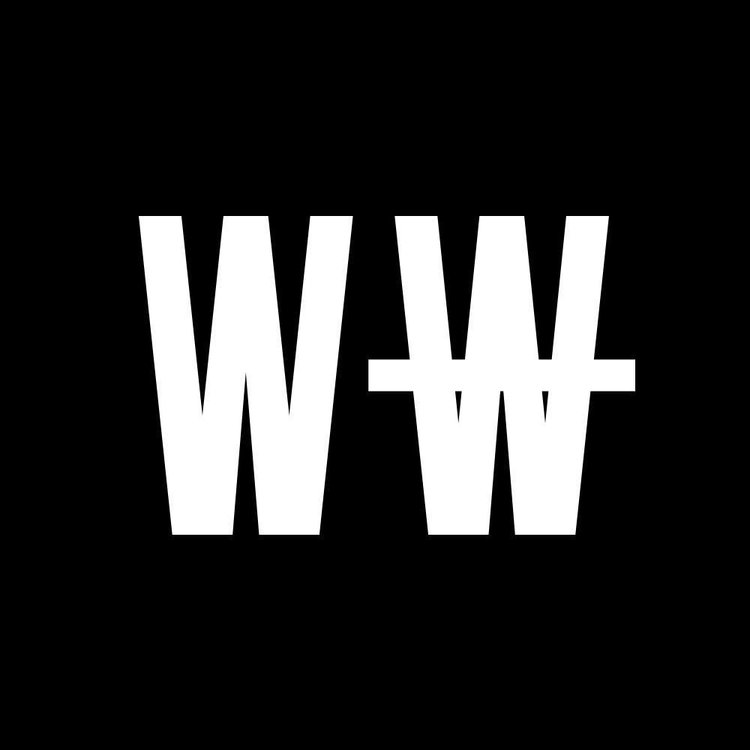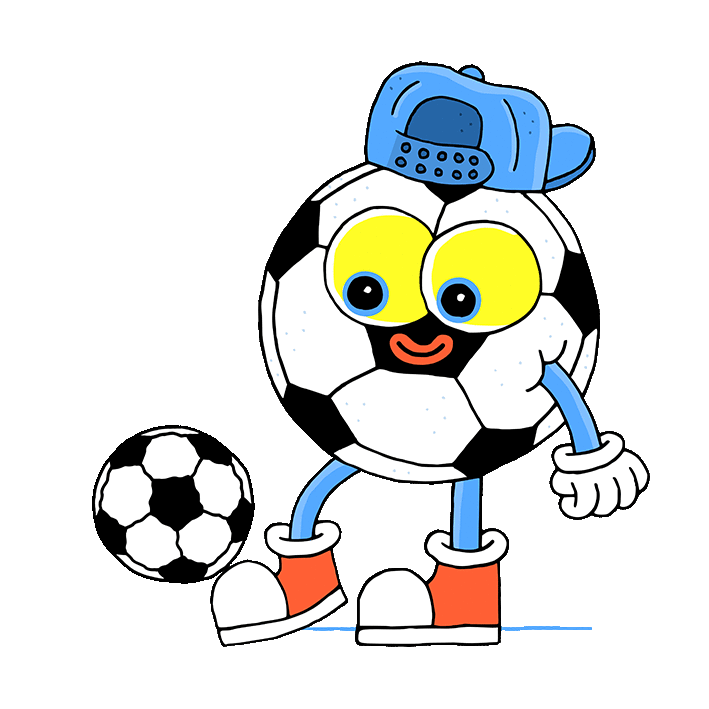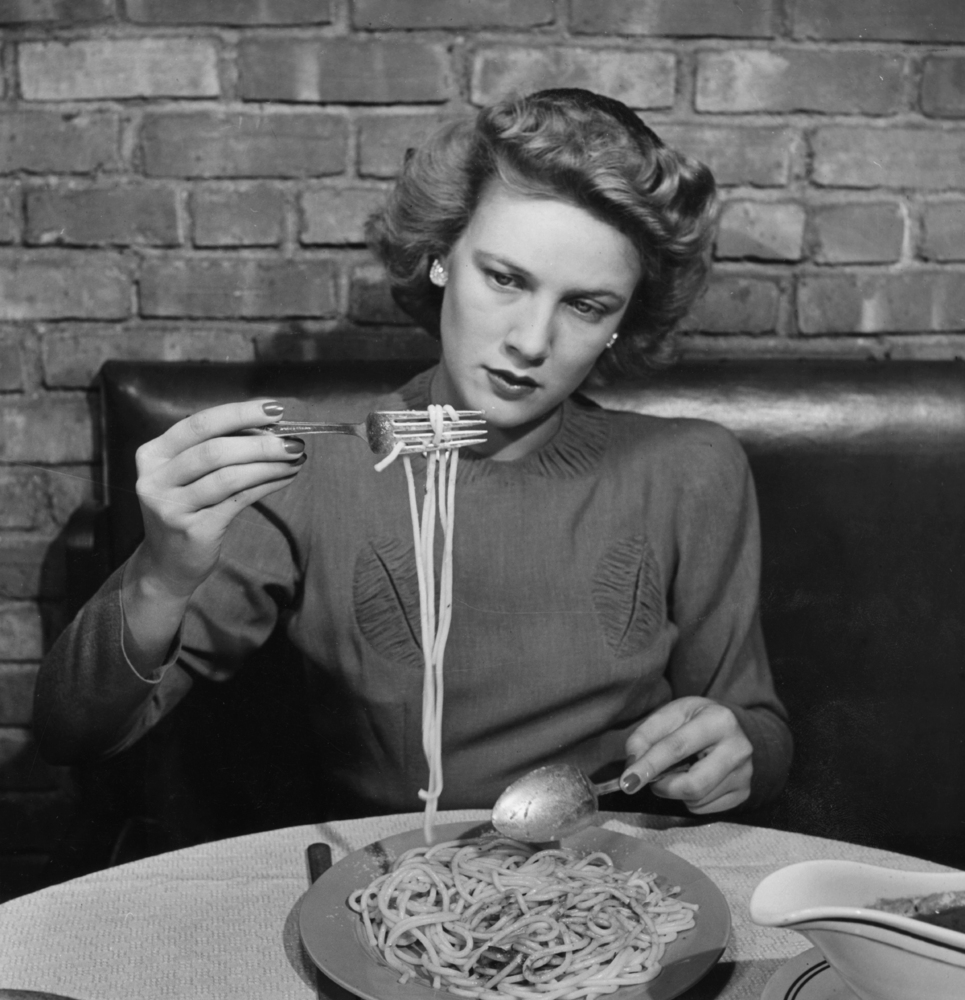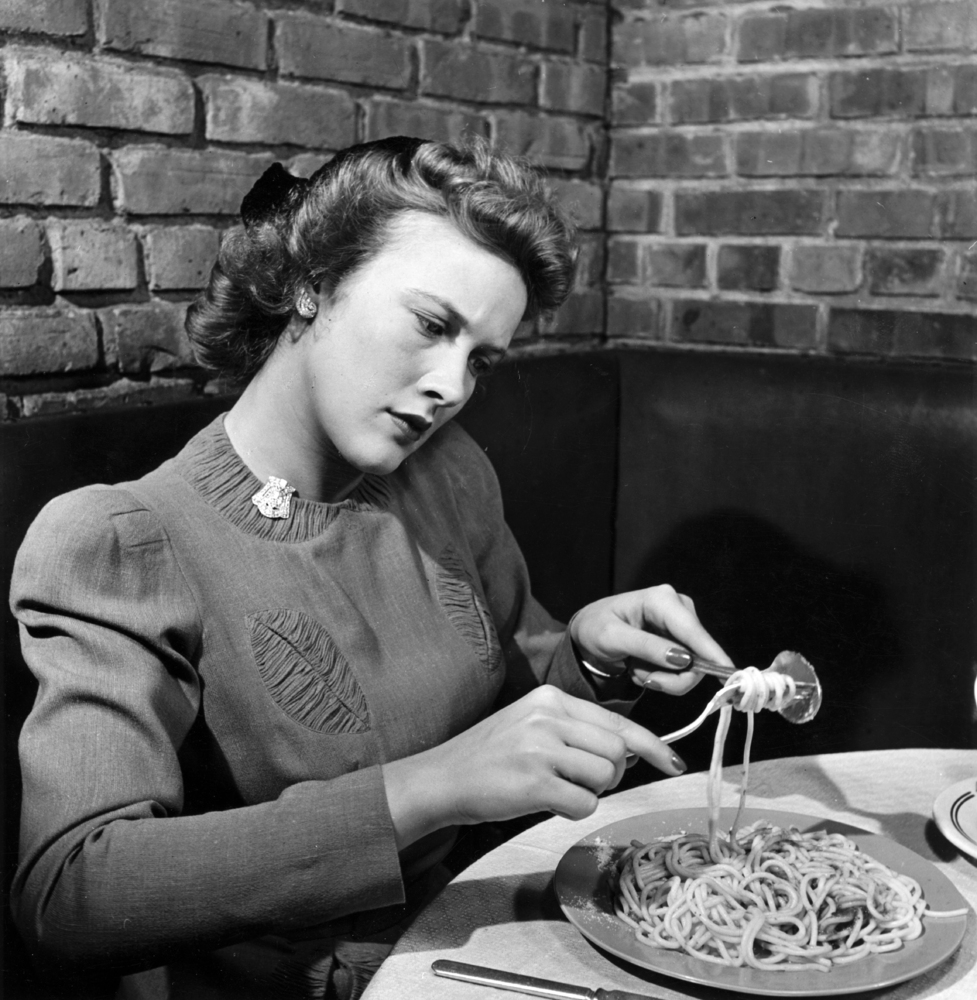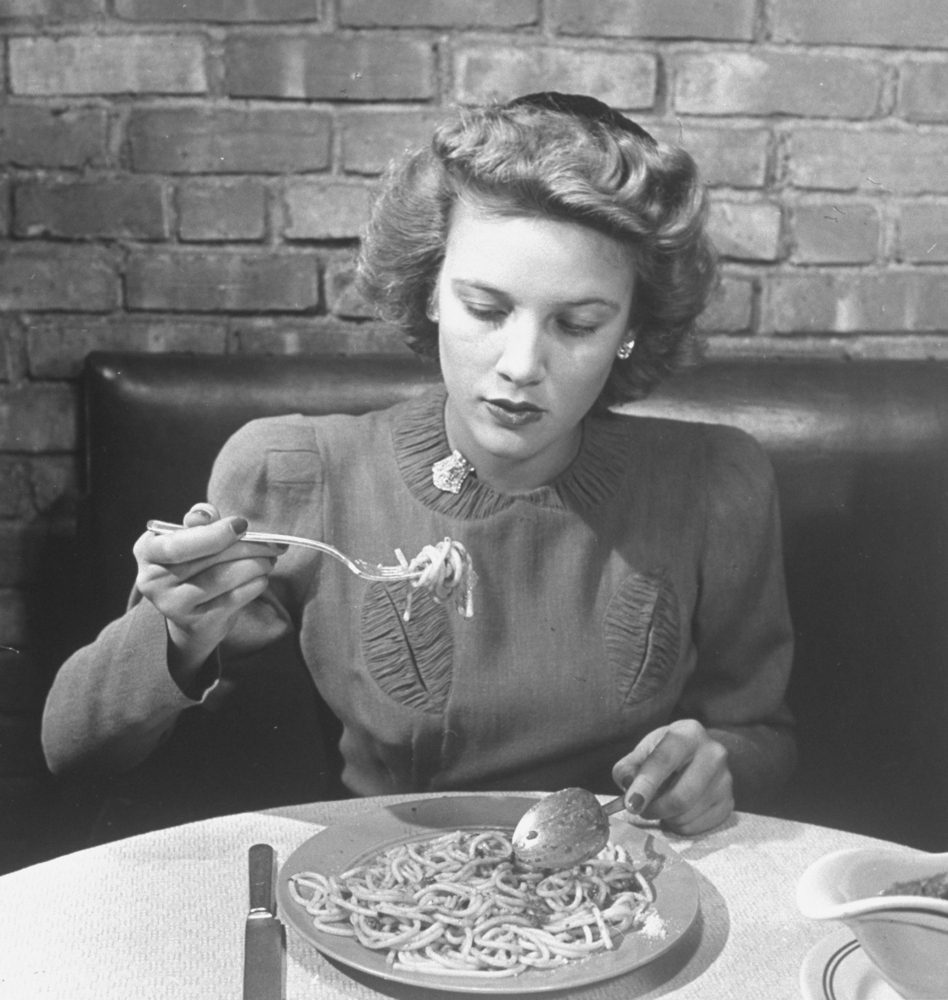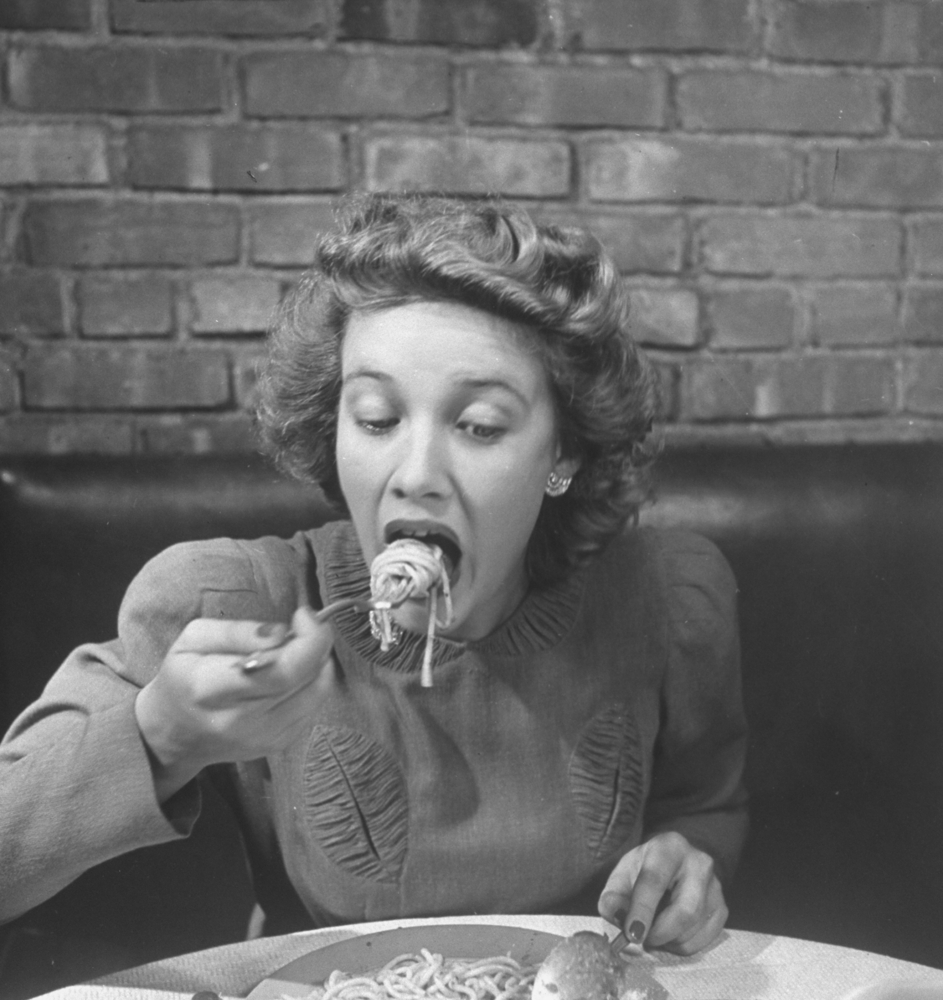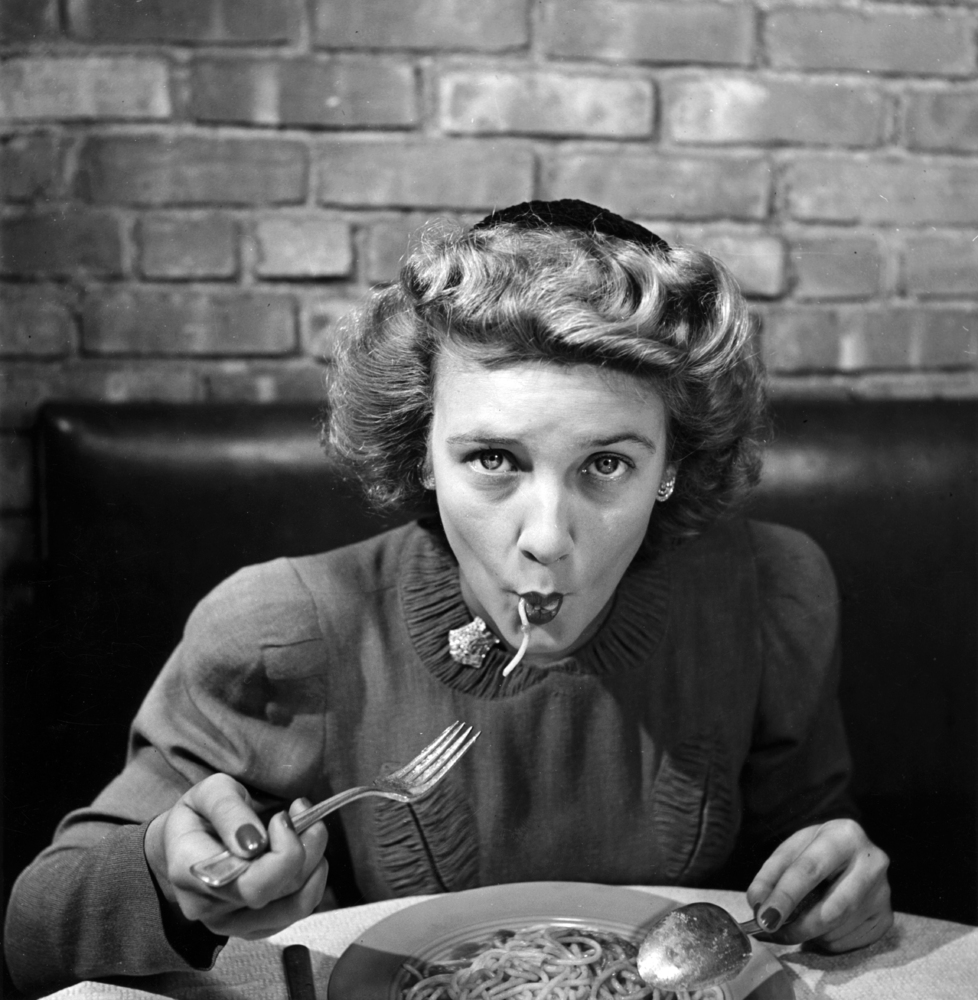London-based illustrator Sam Taylor has created a roster of football gifs with Giphy for the 2018 World Cup. Sam's series is fun and serves up the full range of emotional highs and lows that every soccer fan knows all too well.
Read MoreA Portfolio Redesign Will Help Clients See You How You'd Like to Be Seen
Creatives are experts at exporting their creativity, but often forget to apply those skills to their own brand. WNW Member Ngaio Parr was no exception until recently, when she committed to redesigning her studio's portfolio site. “"Everything outside of the actual work is such a steep learning curve!”
Read MoreShantell Martin, Queen of Alternative Canvases, Teams with 1800 Tequila
For WNW Member Shantell Martin, everything is a canvas. The London-born artist has turned walls, bicycles, sunglasses, sneakers, and clothing into distinct works of art that could belong to no one else. We can now add bottles to that list: 1800 Tequila has enlisted Shantell for their latest Essential Artists Series, in which world-renowned artists have their work emblazoned on 1800 Tequila’s iconic bottles.
Read MoreThe Great New York Subway Map Introduces Young Readers to Graphic Design
What WNW Member Emiliano Ponzi and MoMA have created is not just a picture book but a reminder of the educational benefits of understanding how your surroundings work from a young age, and recognizing the humanity behind design decisions.
Read MoreCorey Brickley Adds His Touch to Netflix's New Hit Doc
WNW Member Corey Brickley was brought in by Netflix and Duplass Brothers Production to create animations and illustrations for Wild Wild Country, a new documentary series about a controversial guru who builds a utopian commune in the Oregon desert, causing a massive conflict with local ranchers.
Read MoreFilip Peraic Sets the Stage for Leon Bridges' New LP
Filip Peraic discusses his collaboration with Leon Bridges and Columbia Records, how he thinks his artwork effectively sets the stage for Bridges' new sound, and which musicians he'd love to design artwork for next.
Read MoreThis Editorial Illustrator Wants to Make Work Actually Useful to Art Directors
WNW Member Eleni Kalorkoti has collaborated consistently with the likes of The New York Times and The New Yorker, creating painterly illustrations that have the ability to accentuate the text and tell a story all their own.
Read MoreBen The Illustrator Surveyed 1261 Illustrators About Clients, Contracts, & Loneliness
WNW Member Ben The Illustrator released a survey of 1261 illustrators from around the world. Every illustrator should buy Ben a beer for putting together this rallying force for one of the more solitary creative professions.
Read MoreThe New York Times' "Year In Illustration 2017"
Every year The New York Times commissions thousands of original illustrations from independent artists around the globe. We share the 21 WNW Members whose contributions made the NY Times' year-end list of the highlights
Read MoreThis Lettering Artist Will Expand Your Vocabulary Through Design
Creatives and artists often talk about how certain projects serve as valuable learning experiences. But WNW Member Mark McCormick's ongoing project, Word is Drawn, is literally that. And not the misuse of "literally" that people are often tossing around. Five years ago, during a creative dry spell, Mark decided to hone his skills as a lettering artist and designer by subscribing to Dictionary.com's daily email and drawing whichever word it threw at him. Mark's resulting renderings manage to perfectly blend the word's definition and a good bit of humor. In short, they're both fun and educational.
Read MoreTobias Hall, Warburtons, & Peter Kay Present Pride & Breadjudice
WCRS and Warburtons have developed a reputation for creating blockbuster campaigns, having previously enlisted the help of Sylvester Stallone and The Muppets to help bring their message to life. This time, they called on WNW Member / Illustrator / Letterer Tobias Hall and British Comedian / Actor Peter Kay to create a hearty bread-themed parody of Jane Austen's Victorian classic.
Read MoreThis is a "How to Look Within & Get Over Your Own Bullshit" Book
There's an abundance of "How To" books by "experts." WNW Member Adam J. Kurtz doesn't see his new book, Things Are What You Make of Them, in that light, nor does he regard himself that way. But would you really want to read a book that purported to have it all figured out by someone who's tagged themselves with every complimentary title?
Read MoreCreativity & Chaos: Jon Burgerman Releases 4 Books This Year
British-born and New York-based WNW Member Jon Burgerman's work is always teeming with boundless energy, spontaneity, and a healthy dose of chaos. Prolificacy seems like a natural result. If anyone would release four books in one year, it's Jon.
Read MoreMathilda Holmqvist's Work Brings People Together, Often for Food
Mathilda Holmqvist's Work Brings
People Together, Often for Food
MIKE O'DONNELL / EDITOR
Being a freelance illustrator and graphic designer has afforded WNW Member Mathilda Holmqvist the ability to combine her two favorite passions: visual communication and food. A lot of her work exists within London's food scene, like a recent large-scale project designing a food court next to the Thames under Hungerford Bridge. In our interview, Mathilda tells us why she elected to switch over from painting to pursue a career that employs her creativity in an everyday and communal sense.
Mathilda also offers some really useful advice on maintaining creative curiosity. "It’s more fun to be a beginner at something than a master, so don’t be afraid to go outside your comfort zone as you’ll approach a project with a really different energy as a beginner than if it’s something you’ve done for years."
Tell us a bit about your creative background. Who is Mathilda and how did she get here?
I started out studying painting at a private school in Sweden and then moved to London to study Fine Art at Goldsmiths. After graduating I worked full-time as studio manager for a sculptor for 3 years until I finally made the move to go freelance.
I really loved my years of studying art but a few years after graduating I realised I much preferred working directly with people, and for my creative work to be more useful in an everyday sense rather than contained to hanging on walls to be looked at. (Not that there is anything wrong with that!) So I moved on to working with illustration and graphic design, and for the last few years, I’ve worked mainly within the food scene in London, which I love! Food is my other passion besides visual communication.
How would you describe your creative style? Do you recognize a signature style that links most of your projects, or do you try to excuse yourself and approach each project as its own entity?
Probably something along the lines of bold, sensitive and atmospheric. I started out creating quite painterly illustrations with lots of textures and details as that was how I was used to working, but as I developed as an illustrator my images have become more minimal and scaled back. I don’t think of myself as having a signature style but rather of my work as being a progression of my development as a creative. The style is more a reflection of what inspires me at a specific time and what I’m trying to communicate.
What do you see as the turning point in your creative development and career so far?
When I had worked as a studio manager for about 2 years, I applied to an illustration competition to create a whisky label for Bunnahabhain. During those two years I hadn’t done much creative work as I felt disconnected from painting but hadn’t found a new creative platform to replace it with. At the time I was a bit worried I would end up working for the creative industry rather than as a creative. But unexpectedly I won the competition, which led me to recommit to working creatively and exploring illustration and design. It turned out I both loved the process making of illustrations and graphic designs as well as the community. A year later I moved on to freelancing.
What were some of the challenges in launching your creative career?
Having expensive Swedish student loans to pay back as soon as I graduated was definitely a challenge, as it didn’t leave much room for internships or just exploring different options. Another thing was getting a hang of how the illustration world worked, since it wasn’t an industry I was familiar with. I found pricing and contracts very confusing in the beginning – and still do sometimes!
Which of your projects are you proudest of and why?
Together with my boyfriend, I run a design collective called Pencil x Pixel, where we mainly design branding for London and UK-based food traders and producers. This spring we were commissioned by Southbank Centre and three separate food traders to design a food court next to the Thames under Hungerford Bridge. It was the biggest commission scale wise we had done to date. It was so much fun working on that scale and thinking about how people would physically experience and interact with the area, the colours and designs, as well as getting all of the food trades individual branding to work together cohesively. It was a challenge I really enjoyed and one of those projects that felt really rewarding and satisfying to complete.
What would be your dream project or job, or is it already on your resume?
I would love to illustrate and design a cookbook! I have always enjoyed reading cookbooks and love learning about different cultures through their food traditions and recipes. So to dive into illustrating a really thick cookbook that people would use for decades would be a dream.
How would you define the London creative scene?
Extremely talented and full of friendly but really hard working people. It is also very diverse and dynamic.
How do you see the creative landscape shifting in the UK/Europe?
I think visual design is becoming a bigger part of our everyday lives, which is great as it’s creating more work for creatives. It’s also become a bigger part of companies’ identities, no matter the industry. Even smaller companies are becoming more sophisticated in their approach to design and branding. I think this is leading to more being asked of creatives in shorter amounts of time, but maybe it’s always felt like that?
If not here, where would you most like to live?
Either in a cabin in the North of Sweden or Vancouver. Vancouver would probably be better for work… but North of Sweden would be great for inspiration!
Who are your biggest creative influences?
At the moment I’m very inspired by Aaron Draplin’s ‘Thick Lines’ posters. I’m going through a bit of a 60’s and 70’s phase and just love how those posters in a very contemporary way evoke that era for me.
What scares you most about making creativity your career?
Not much at the moment! I had lots of worries starting out but am at a pretty happy place at the moment creatively. I’m sure there will be more worries in the future but for now, I’m just enjoying working.
One book, one album, one movie, one show. Go.
Book: Big Magic by Elizabeth Gilbert
Album: Anything by Alison Krauss
Film: It’s A Wonderful Life
TV: Parks and Rec
What is your most treasured possession?
Hmm… not sure! Maybe my Moomin mugs? Tove Jannsons’ illustrations are a daily inspiration while having my coffee.
What did you want to be when you were growing up?
A wallpaper designer, fashion designer, astronaut, actress, Disney animator and a painter in the south of France (I was very good at dreaming of the future).
What do you do when Not Working?
Cooking, eating, seeing friends, playing softball, baking, reading.
What’s the best advice you’ve ever heard or received that all creatives should hear?
It really depends on what kind of creative rut I’m in, but either ‘just do it’ or ‘work hard and be disciplined’ or ‘take time to refuel your inspiration’ usually does it for me. I also found this to be true, that it’s more fun to be a beginner at something than a master, so don’t be afraid to go outside your comfort zone as you’ll approach a project with a really different energy as a beginner than if it’s something you’ve done for years.
Who are some WNW members whose work you admire and why?
Lilian Darmono for her wide creative skills and talents (I don’t think there’s anything she can’t draw!) and my very talented boyfriend and collaborator Ian Sargent who teaches and challenges me creatively almost every day.
What’s next for you? What are you working on now?
At the moment I’m working on three exciting branding projects for local food traders. I’m also hoping to take some time to work on a personal project I’m developing around food and hosting dinners this autumn.
Discover more creative talent and projects like this on Working Not Working. If you're a WNW Member with new work, exhibits, products, or news to share, email us.
Edward Tuckwell's Cinematic Illustrations Look Ready To Move
Edward Tuckwell's Cinematic Illustrations Look Ready To Move
MIKE O'DONNELL / EDITOR
WNW Member Edward Tuckwell's work often looks like it's pulled from a classic film that doesn't yet exist. The cinematic staging and palpable tension of Edward's world draw the viewer in, with his images often feeling like they're pausing mid-motion. We interview Edward to talk about his creative style, his biggest influences (who tend to be filmmakers), and the turning point of his creative career, which he credits to London: "It seems like a common trend with a lot of people I know, but there’s a certain relentless buzz of a capital city which is so important for a freelance creative starting out. Being around people whose work I admire, collaborating on projects, and fully immersing myself in the industry helped me develop."
Tell us a bit about your creative background. Who is Edward and how did he get here?
I knew from a relatively early age that I wanted to work in some form of creative job. My mother was a landscape architect, and my father works in construction so I thought I would end up pursuing a career in Architecture. At the time of my foundation year, I wanted to explore multiple disciplines and found that Illustration was a good compromise between graphic design, traditional art, and photography. Since then I’ve leaned on the graphics side more and more until I’ve ended up with the approach I have today.
How would you describe your creative style? Do you recognise a signature style that links most of your projects, or do you try to excuse yourself and approach each project as its own entity?
I think it's important to come at a project from a fresh perspective without forcing a visual style that might not be suitable for the job. Having said that, there is a need to keep some sort of consistency across the board. It's a balancing act. I tend to use sections of flat colour to define the illustration, combined with a small analogue element of some sort - a scanned texture, brush stroke or dissolved gradient for example.
What do you see as the turning point in your creative development and career so far?
Leaving part-time work and moving to London. It seems like a common trend with a lot of people I know, but there’s a certain relentless buzz of a capital city which is so important for a freelance creative starting out. Being around people whose work I admire, collaborating on projects, and fully immersing myself in the industry helped me develop.
What were some of the challenges in launching your creative career?
One of the largest challenges was working around my job in a restaurant to develop a body of work. Finding the time to do that was difficult, and my social life at the time suffered as a result. From there, getting enough regular design work to support myself financially was a big hurdle to overcome.
Which of your projects are you proudest of and why?
The TFL campaign for ‘New Spacious Trains’ on the Underground was a nice moment. The job came in soon after I had moved to London, and was the first time I’d actually felt proud of a piece of work I had produced. I’m currently working on a 3-year ongoing project with Studio Pensom and SMOKE Creatives for The Canal & River Trust, illustrating the covers of Waterfront magazine. They’re shaping up to be a really good set of images, and I’m very thankful to be part of the project.
What would be your dream project or job, or is it already on your resume?
I would love to work on a modern-day film poster with a top director, much in the vein of S. Bass / A. Hitchcock. Or produce something for BAFTA, Cannes, The Oscars… But I'm dreaming.
How would you define the London creative scene?
Vibrant. Driven. Relentless.
How do you see the creative landscape shifting in the UK/Europe?
I’d find it hard to predict to be honest. People have been saying for years now that print media will die out soon, but it only seems to be going from strength to strength, much in the same way vinyl has had a massive popular resurgence. I see new magazines, publications and exciting print work emerging all over the place. I can only hope that we don’t loose our connection to tactile things… even though most of my day is spent staring at a computer screen.
If not here, where would you most like to live?
Rural Japan. I’d like to live somewhere totally alien to London and the UK for a couple of years.
Who are your biggest creative influences?
In my personal work, I take a lot of influence from film, old and new. I see Paul Thomas Anderson, Steve McQueen, Damien Chazelle and Alejandro González Iñárritu as some of the finest directors working today, and I always make an effort to catch their films in the cinema. Other than that I pretty much worship these late image makers - Eyvind Earle, Moebius, Fumio Watanabe and Saul Bass.
What scares you most about making creativity your career?
The need to work for money taking over the love of making art.
One book, one album, one movie, one show. Go.
The Road - Cormac McCarthy
Hail To The Thief - Radiohead
There Will Be Blood - Paul Thomas Anderson / Robert Elswit
True Detective - Cary Fukunaga / Nic Pizzolatto
What is your most treasured possession?
My 1970s Zieleman ‘Type Special’ racer. It's the oldest possession I own, and I use it daily to transport me around the city - mainly to and from work.
What did you want to be when you were growing up?
A downhill mountain bike rider of all things. We used to have a downhill track near my house in the countryside growing up, where the top teams in the UK would come to ride on the weekends. I used to go down there with my mates from school and watch guys launch themselves off dirt jumps that towered over our heads. It was the coolest thing ever.
What do you do when Not Working?
Going to gigs, traveling to and from Brighton, spending time with my girlfriend, indulging in computer games, visiting galleries and hibernating at the cinema.
What’s the best advice you’ve ever heard or received that all creatives should hear?
I said something along the lines of this in another interview a few years back, and I think it's just as apt now as it was then… Take advice with a pinch of salt, others' experiences may not apply or work for you. Just make work.
Who are some WNW members whose work you admire and why?
Janne Iivonen - A fantastic Brighton based Illustrator, with some of the best character-based figures in the game.
Kate Copeland - Without a doubt the most talented person working with brush and ink today, she depicts photorealism with a truly unique eye. Based in London.
Adam Avery - The Norwich work-horse with a vibrant use of colour and an always interesting collection of graphic shapes in his compositions.
What’s next for you? What are you working on now?
I'm working on a variety of projects at the moment, a couple I can’t talk about. Right now I'm on the next installment of Waterfront mag, a drink's bottle label, and some illustration work for a south-west music event.
Discover more creative talent and projects like this on Working Not Working.
If you're a WNW Member with new work, exhibits, products, or news to share, email us.
Book Lovers Day: Regular Worms Are Weird. Bookworms Are Cool.
No pressure for all these authors, memoirists, and poets, but the bar is set pretty high before even getting past the dust jacket.
Read MoreJing Zhang's Illustrations Capture A Big World In A Small Frame
Jing Zhang's Illustrations
Capture A Big World In A Small Frame
MIKE O'DONNELL / EDITOR
WNW Member Jing Zhang has lived in London for over 10 years, and she doesn't play down its influence. "This city changes lots of people’s dreams and life paths, including mine." During her time in London, Jing has seen her career as an illustrator develop and flourish. In our interview below, Jing opens up about some of the challenges of pursuing a creative career, specifically in regards to pricing yourself and your work. She also shares her dream to have her work printed on a jumbo jet, references London's investment in creativity through the lens of the TFL, and predicts how the creative landscape may shift in the UK. "Despite the political uncertainty ahead, I think the future of the UK’s creative industry is actually shaped by the internet. The way clients and freelancers work will become more borderless; it will be less important where you’re based."
Tell us a bit about your creative background. Who is Jing and how did she get here?
I was born and raised in Southern China. I've been living in London since 10 years ago, where I now make it my home. This city changes lots of people’s dreams and life paths, including mine. In 2007 I took my first commission from Computer Arts to illustrate their cover when I was a student. This has paved my way to becoming an illustrator today.
How would you describe your creative style? Do you recognize a signature style that links most of your projects, or do you try to excuse yourself and approach each project as its own entity?
My illustration style is architectural, graphical, infographic. From project to project the style might differ. But the general theme is to give all my illustrations a big world in a small frame with lots of tiny people. They can be flat, isometric, 3D. I don't claim to own a certain style. But it is what I find very interesting at the moment and have been the most passionate about.
What do you see as the turning point in your creative development and career?
Perhaps it's the point when I left my full-time job which lasted for five whole years. In the latest 2 years of my full-time job, I started taking lots of "moonlight shifts." I got more and more commission work, so much that I started to lose my personal time and weekends. So I started my real career in 2014 concentrating on my illustrations. I don't even call myself a freelancer as I am selling my products rather than just my skills and time.
What were some of the challenges in launching your creative career?
The difficult part would be pricing myself in the market. Everyone is different, you simply can't apply someone else's experience and price card on your own. On top of that, my customers come from all over the world with different markets and different values for creative work. This added more complexity to my non-existing price card. I had my agents but honestly no one really knows your price better than yourself. And it takes years of experience to get to know that. No, I still don't have a price card.
Which of your projects are you proudest of and why?
The Imaginary Factory project got me started with my career as an illustrator;
The Recipe Card project kept me going.
The Heys Luggage is my first packaging project.
Legoland map is my first theme park map project.
My illustration for Dubai Expo went exhibiting around Dubai as a sculpture. It was my true honor to be a part of it.
What would be your dream project or job, or is it already on your resume?
In my mind, a typical dream job would be a well-established brand knocking on my door and saying, "Hey, here is some money and please do whatever you want." But my type of dream job would be having my work printed on a jumbo jet. I don’t have anything like that in my portfolio yet. I will tell you when I do although I don’t think I ever will. But I think about it every day. :)
Where are the best places to work in the UK?
Not sure if I'm stating the obvious. But it can't be anywhere else than London. It's such a great city encouraging all kinds of creative work.
How would you define the London creative scene?
It's fast-paced, open-minded, and diverse. To start with, TFL (Transport for London) is probably the best example of a London corporation that embraces creativity so well. London underground feels like a gallery for commuters and a battleground for all advertisers. TFL also fuels up the creative scene with their own vivid seasonal campaigns.
East London is also home to many brilliant creative studios and world-renowned artists. When you walk into a kebab shop in Dalston, it’s very likely you’ll see the art legends George and Gilbert having their meals next to you.
How do you see the creative landscape shifting in the UK & Europe?
Despite the political uncertainty ahead, I think the future of the UK’s creative industry is actually shaped by the internet. The way clients and freelancers work will become more borderless; it will be less important where you’re based.
In terms of creative style, Europeans keep a lot of local tradition whilst the British would very much like to try everything. e.g. the hand-drawn look has been popular for a long time in France whilst lots of Nordics will favor minimalism. British might just like them all.
If not here, where would you most like to live?
Porto, Amsterdam, Hanoi, Kyoto, just to name a few.
Who are your biggest creative influences?
My husband, WNW Member James Wignall. He’s a super talented animation director who brought me to the creative world.
What scares you most about making creativity your career?
I wracked my brain for an answer. But there really isn’t anything serious. If there needs to be one, I’d say that I’m constantly paranoid about “oh no, people don’t like my work anymore, because I have fewer likes from this project than the last one." It’s silly but we are sensitive.
One book, one album, one movie, one show. Go.
Sleep Tight (Rachel Abbot)
Innerworld (Electric Youth)
Spirited Away (I’ve watched it probably over 10 times)
Black Mirror
What is your most treasured possession?
Most of my plants. I have recently obtained a pilea peperomioides. Oh my gosh it is so beautiful.
What do you do when Not Working?
Having some time away is very important for me. I usually go away around 2 months a year. In the last year, I spent 4 months traveling around the world. It was very refreshing.
In my spare time, I just stare at my plants. I’m growing over 50+ species in my balcony, enough to keep me away from the computer every now and then.
What’s your motto?
"Keep your eyes on the prize."
What’s the best advice you’ve ever heard or received that all creatives should hear?
Stay inspired. Stay excited.
You should keep finding time for personal projects. The benefits of personal projects are so much more than you think, in your career, in bringing better clients, also in mental health.
What’s next for you? What are you working on now?
I’m working on my cocktail recipe project. It’s a project that connects the recipe with local culture. I learn a lot through the process. I’ve tried lots of new things outside of my skillsets (3D texturing and creative writing). It is my zen garden time after my commercial work.
Are you a WNW Member with new work, exhibits, products, or news to share?
Email us!
"2016," A BOOK AND YEAR OF POSTERS BY BRÁULIO AMADO
"2016," A BOOK AND YEAR OF POSTERS BY BRÁULIO AMADO
Portugal-born, NYC-based WNW Member Bráulio Amado has a new book out called 2016. Printed on 120 pages of coated matt volume 170 grain paper, 2016 collects essentially every poster that the graphic designer and illustrator produced last year. Which is a lot. A whole lot of eclectic awesomeness. From underground DJ shows to Ty Segall concerts and everything in between, the collection captures both the chaos and ever-evolving style of Bráulio's work. Buy a copy here.
Are you a WNW Member with new work, exhibits, products, or news to share? Email us!
Olimpia Zagnoli Demonstrates How to Eat Spaghetti Like a Lady
Olimpia Zagnoli Demonstrates How to Eat Spaghetti Like a Lady
MIKE O'DONNELL / EDITOR
In 1942, Time Life magazine prescribed a step-by-step process for "how to eat spaghetti like a lady." It seems the times have changed. Milan-based Illustrator and WNW Member Olimpia Zagnoli has now masterfully subverted the original with her own series, also titled How to Eat Spaghetti Like a Lady. The black-and-white originals by Alfred Eisenstaedt (displayed below) suggest composure, conduct, and convention. Olimpia twirls this idea of uniformity into submission and shows off an eclectic array of colorful personalities, creatively enjoying their pasta as they defy the rules of conduct and, while they're at it, even the rules of gravity. Olimpia's show will be open through the end of July at Antonia Colombo Arte Contemporanea in Milan.
Photographs and Instructions from Time Life
Step 1: “Four strands of spaghetti should be segregated from the pile.” Step 2: “With soup spoon as prop, twirl fork and spaghetti gently.” Step 3: “A ladylike mouthful of spaghetti is ready for consumption.” Step 4: “Full forkfuls should be consumed in entirety. Nibbling is out.” Step 5: “Truant strands require patience, lip facility, suck-power.” Step 6: “With end in sight, diner has consumed 160 in. of spaghetti.”
